Given the recent release of the Ultimate Collector's Series TIE Fighter (you can read my review of the set here) I thought I'd mark the occasion by going back to the early days of the LEGO Star Wars theme and taking a fresh look at the first non-variant TIE Fighter that LEGO ever produced, Set 7146 TIE Fighter from 2001. Interestingly, LEGO had already released two TIE variants by the time that Set 7146 appeared on shelves - Set 7150 TIE Fighter and Y-wing from 1999 included a TIE Advanced, while Set 7181 TIE Interceptor from 2000 was one of the very first Ultimate Collector's Series sets that LEGO ever produced.
The box measures about 7.5" (19 cm) wide and 11.5" (29cm) tall, with a depth of approximately 3" (7 cm). The front of the box (above) is dominated by an image of the TIE Fighter complete with motion blur, superimposed on what I assume is the surface of the Death Star. The 2001 LEGO Star Wars logo can be seen top right, although it's unfortunately partly obscured by the price label on my copy (£18 from The Entertainer, if anybody's interested). The set's two minifigures can be seen alongside the TIE Fighter's display stand bottom right; the TIE Pilot looks surprisingly jovial considering that he's about to go into battle in a ship without a shield generator..... The two minifigures make a further appearance on the back of the box (below) where they're shown building the TIE Fighter and also piloting a couple of alternate builds.
The box opens by way of a pair of thumb tabs. In addition to the 171 pieces needed to build the model the box contains a single folded instruction booklet and a pair of folded advertising leaflets. The set doesn't include a sticker sheet.
The instruction booklet is A4-sized which means it has to be folded in half in order to squeeze into the box. It's 16 pages from cover to cover, with a full 3 pages taken up by advertising for a host of Star Wars sets released between 1999 and 2001. You can see an example below, with the rest available to view on the Gimme LEGO Flickr stream here.
In addition to the 3 pages of adverts in the instruction booklet, my copy of the set, which was bought from new back in 2001, includes a couple of advertising leaflets. One of the leaflets features a Star Wars 2002 teaser on one side which you can see here and advertising for other 2002 themes plus assorted bits and pieces on the reverse, while the second leaflet features advertising for LEGO's short-lived Life on Mars theme on one side (picture below) and a mixed bag of LEGO themes, video games and LEGO.com on the other.
The set contains two minifigures - a TIE Fighter Pilot and a Stormtrooper. The version of the TIE Fighter Pilot included in this set can only be found in one other set, Set 4479 TIE Bomber from 2003. Time really hasn't been kind to this minifigure - the helmet's features are extremely poorly defined, so much so that I wondered whether my copy of the minifigure had somehow melted in storage.... Compare and contrast with the most recent version of the TIE Fighter Pilot here from Set 75095 TIE Fighter which picks out the helmet's features via use of silver print. Beneath the helmet there's an unprinted brown minifigure head which has only ever appeared in 3 sets. The torso, which isn't back-printed, has graced a number of TIE Fighter pilots, TIE Interceptor pilots and even a TIE Defender pilot, until as recently as 2012. The legs are unprinted and generic.
There have been many different versions of the iconic Stormtrooper minifigure. The version included in this set has also appeared in 3 other sets. The helmet looks like the same basic element as the TIE Fighter Pilot helmet albeit in white, but the black printing makes a huge difference to the definition of the features. There's an unprinted yellow minifigure head underneath the helmet. The back-printed torso has appeared as part of numerous different Stormtrooper minifigures - 13 according to Bricklink - while the unprinted white legs with black hips have been a part of literally hundreds of minifigures.
Once the minifigures have been assembled its time to get to work on the TIE Fighter itself. The cockpit and wing struts are assembled first. It's pretty tight in the cockpit - there's barely room for the pilot in there and no flight stick, but at least there's a printed control panel. The trans-black printed windscreen is fairly uncommon, having appeared in only 6 sets including this one. The windscreen lifts up via a hinge plate in order to provide the pilot with access to the cockpit. The cockpit roof is covered by a dark grey printed 4 x 4 inverted dish which has only ever appeared in 3 sets in this colour.
The wings are next to be built. These feature crude blue detailing on the outer surface which is supposed to approximate the spokes radiating out from the central hub to the edges of the wing. I've never understood why LEGO used blue elements for wing detailing in this and other early TIE Fighter sets; thankfully they switched to light grey in more recent sets which seems to be a much better reflection of the subject matter. The central wing hub features a light gray round 2 x 2 tile printed with the Star Wars Imperial logo which has only appeared in a total of 5 sets in this colour.
The wings attach via pins protruding from a pair of modified 2 x 2 bricks on the wing struts which insert into the base of an inverted 65 6 x 6 x 2 quad with cutouts on the inner surface of each wing. This forms a reasonably robust join, certainly strong enough to tolerate some fairly enthusiastic swooshing.
A display stand (below) completes the build. The centrepiece of the stand and the element which takes the weight of the TIE Fighter is a dark grey 2 x 2 x 10 vertical support girder which has appeared in a total of 7 sets in this colour. A light grey 12L flexible hose with tabbed dark gray ends provides some nice decoration at the front of the stand.
You can see the completed TIE Fighter resting on its stand in the pictures below. Like its pilot, time hasn't been particularly kind to this model which looks a bit crude and untidy, with more than a hint of BOLOCs about it.... The blue detailing on the wings is particularly nasty. That having been said, it's all very well being critical 14 years after the set was released, but I don't recall having been too disappointed when I first got it. Life, and LEGO, moves on.
As is the case for the UCS TIE Fighter, the ship is perched on the display stand rather than attached to it. There's a 2 x 2 round tile on top of the stand which slips into a shallow recess on the underside of the TIE cockpit. This allows the ship to rotate on the stand, while still supporting it reasonably securely. You can see the finished model on its display stand below accompanied by the two minifigures.
I photographed Set 7146 with the recently-released Ultimate Collector's Series Set 75095 TIE Fighter to try and convey a sense of scale (picture below). There's clearly a substantial size differential, although it's still hard to believe that the Ultimate Collector's Series version contains fully ten times as many elements as its baby brother. The jarring blue detailing of the smaller set stands out like a sore thumb against the UCS version - honestly, what were LEGO thinking?
Set 7146 TIE Fighter contains 171 parts and was released in 2001 at a recommended retail price of £17.99 / US$ 20.00. It's long since been superceded by a number of superior versions, notably 2012's Set 9492 TIE Fighter, so it isn't really a "must have" unless you're a collector. Prices are modest - at time of writing you can get a pre-owned complete, boxed example of the set from Bricklink for as little as £25 plus shipping, and a new, sealed example can be had for not much more than that. They also come up fairly regularly on eBay so you shouldn't have any trouble tracking one down should you decide to take the plunge.

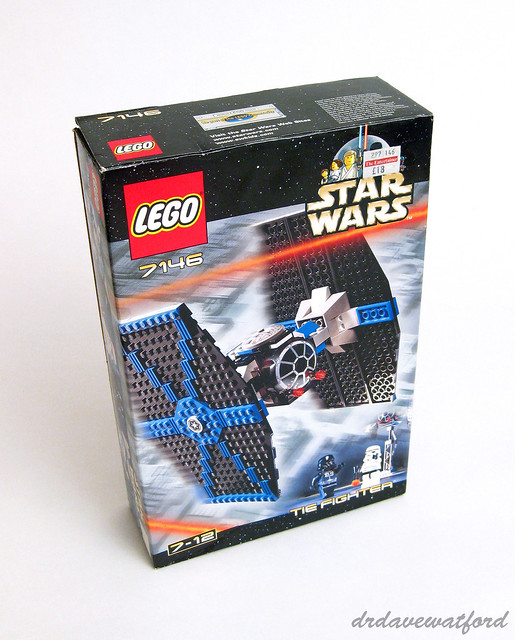
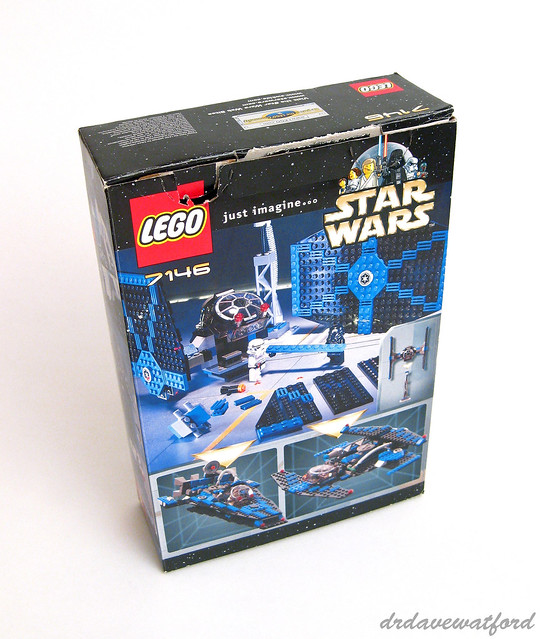
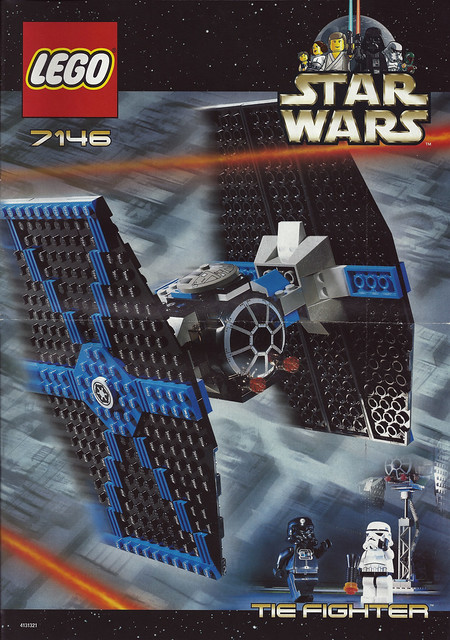
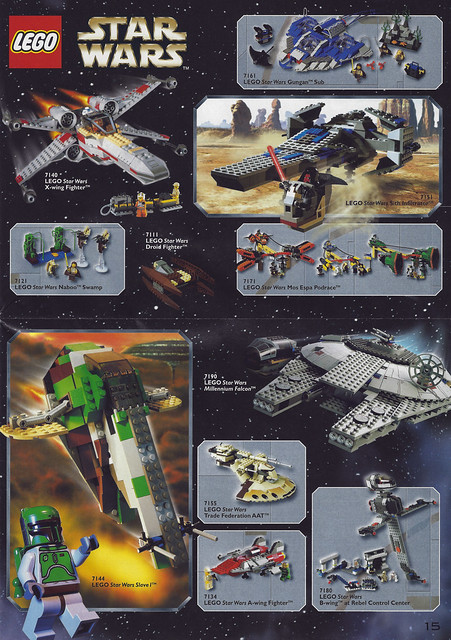
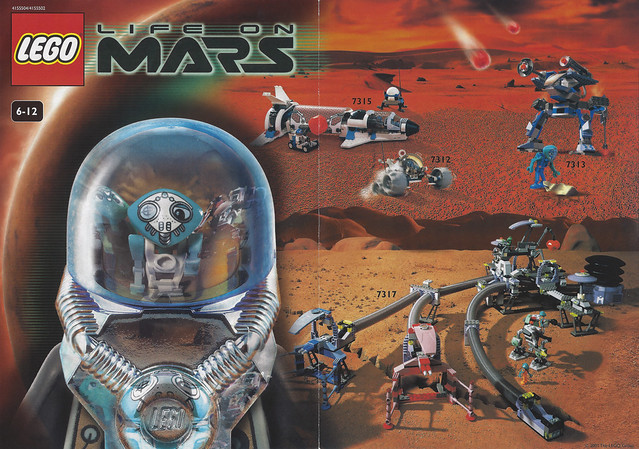
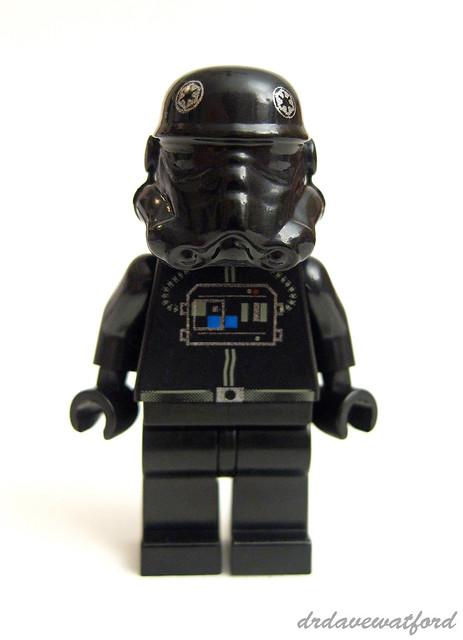
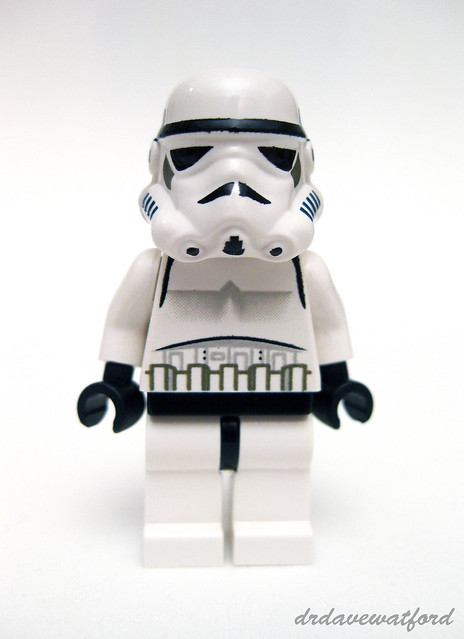
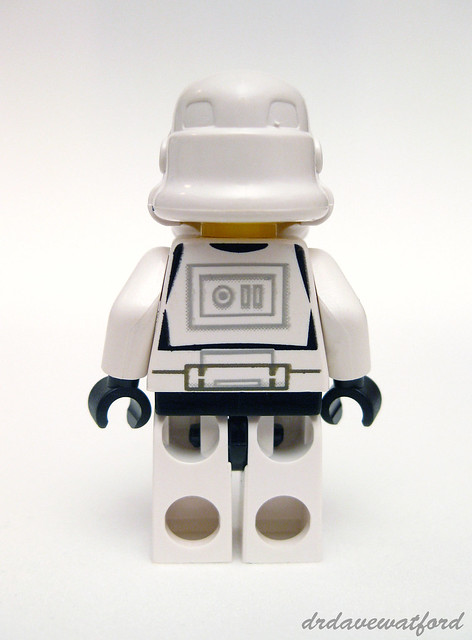
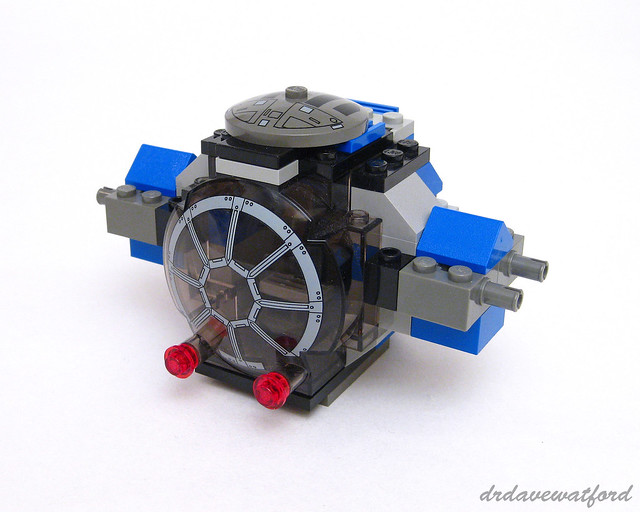
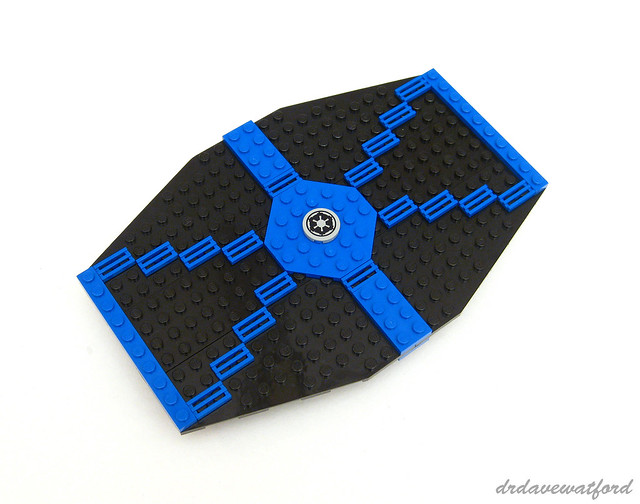
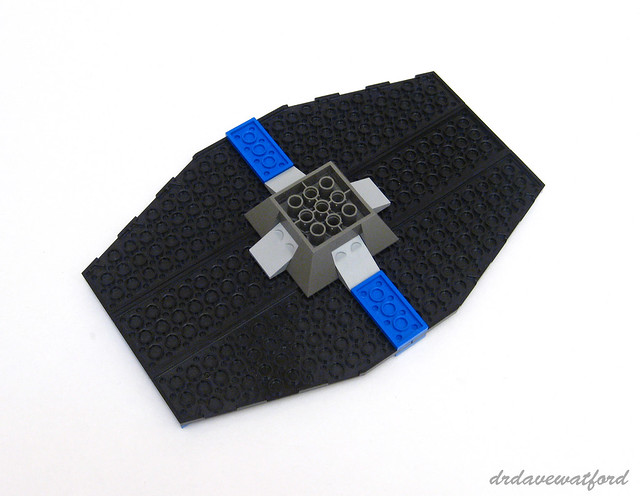
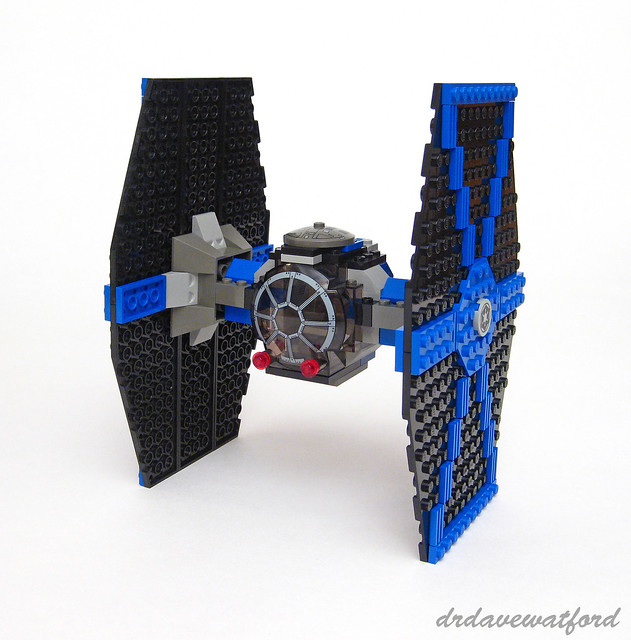
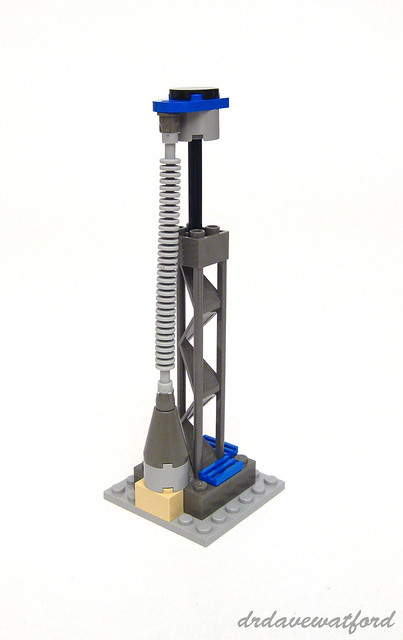
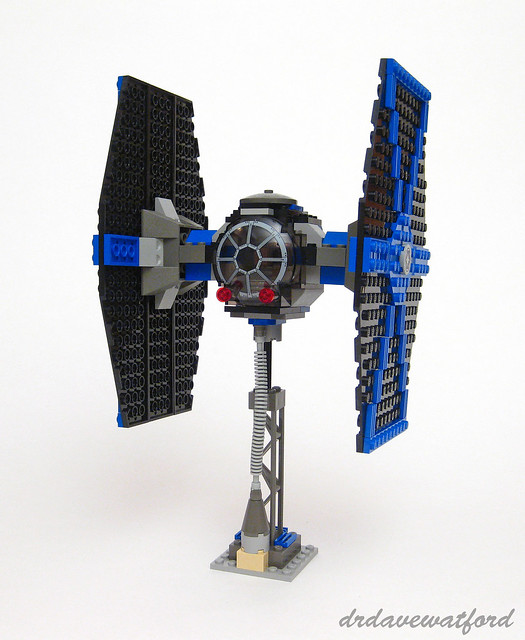
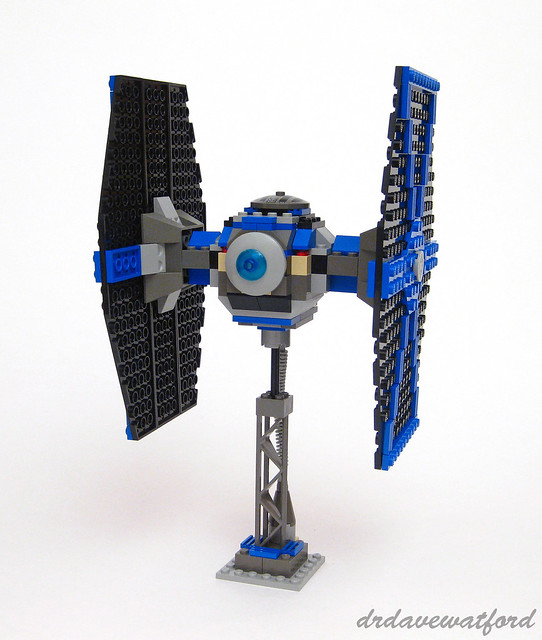
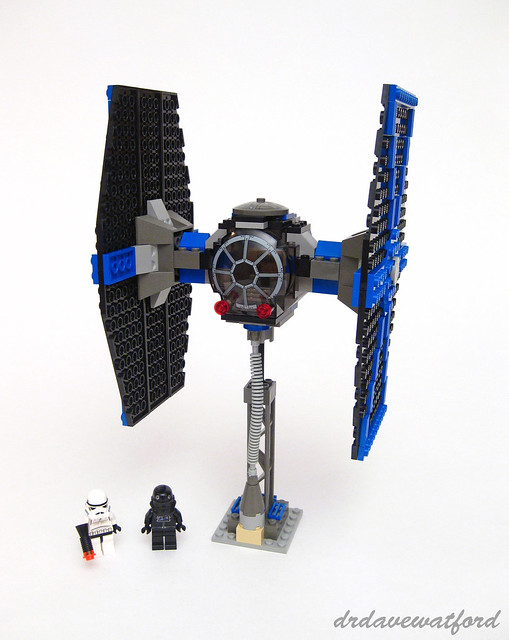
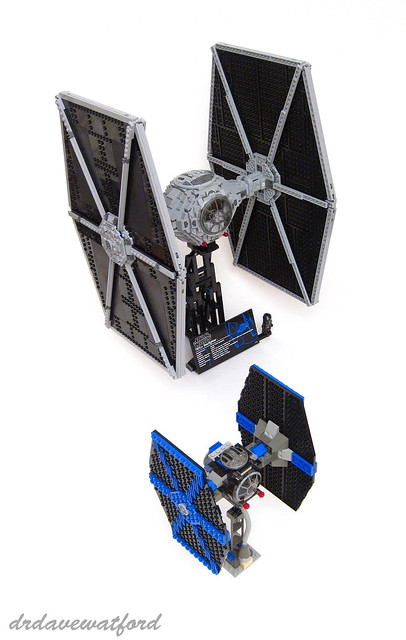
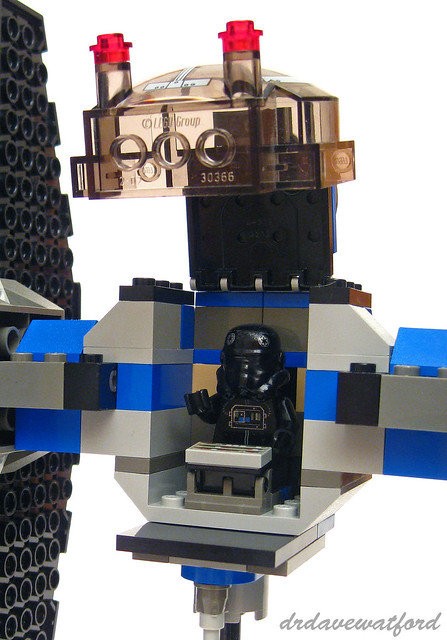
In Lego's defence, the TIEs do sometimes appear to be a bit blue, see the main image on this page for example: http://starwars.wikia.com/wiki/TIE/LN_starfighter. Not sure if sand blue (the closest match to the colour in that image) existed at the time, but I'll concede that light grey/bley are certainly closer than the blue they did use!
ReplyDeleteIt's probably just nostalgia talking, but that first wave of Star Wars sets had a certain primitive charm to them that the newer sets, while far more accurate, are lacking for me. That leaflet brings back some great memories anyway, thanks for posting it :)
I did briefly wonder whether LEGO stopped using blue in the various TIE sets after they'd booted the old light grey and substituted it with light bluish grey but Set 8028 Mini TIE Fighter from 2008 (and I guess the TIE Crawler from 2007) kills that theory. Sand blue might've been an interesting compromise....
DeleteI know what you mean about the rough charm of the early Star Wars sets. Some of them, for instance the first Slave 1 from 2000 and the Sith Infiltrator from 1999, are pretty shocking, and yet.... Maybe the newer sets are so polished that they no longer seem like 'real' LEGO...?
"Initially given a blue color scheme, the TIE fighter models for the first Star Wars movie were grey to better film against a bluescreen; TIE fighters in the next two movies shifted back to being a muted blue."
ReplyDelete